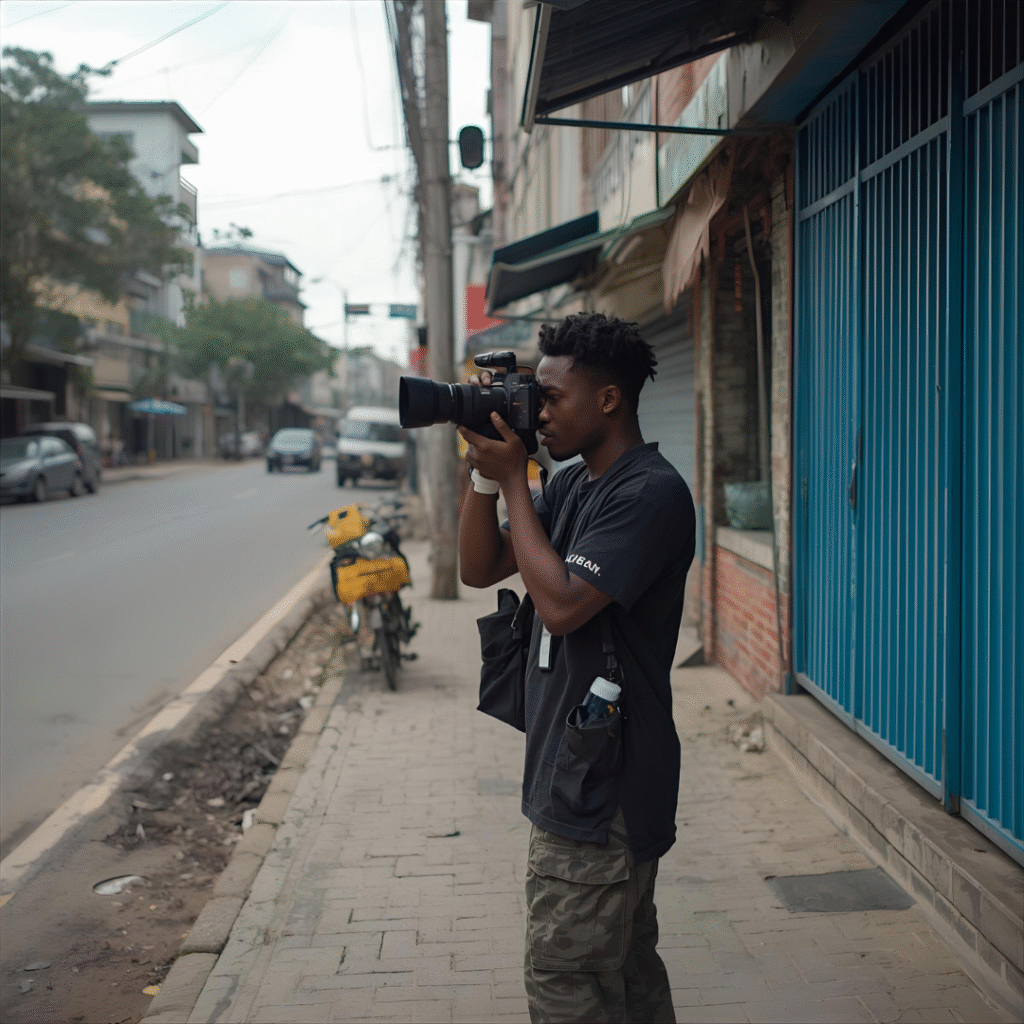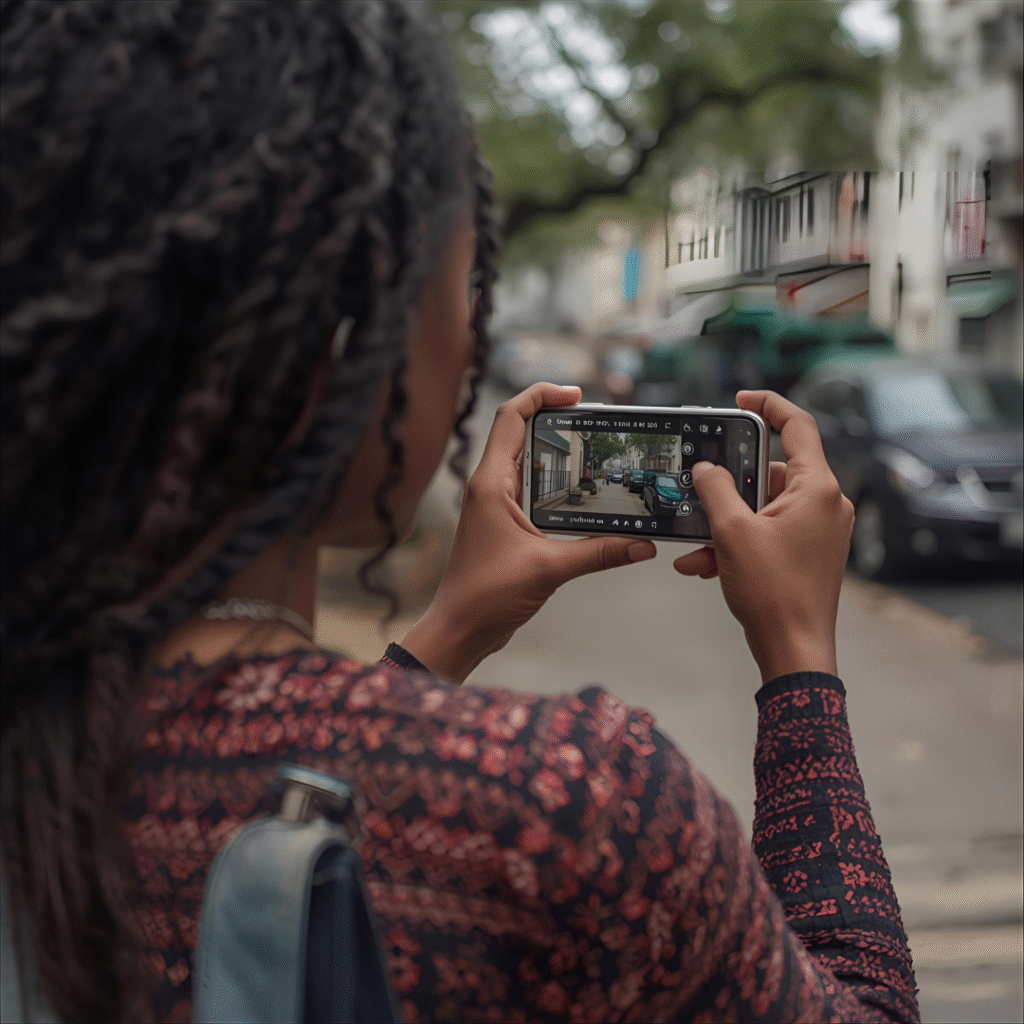Nairobi’s Central Business District has been hit by a sudden wave of violent muggings, with gangs targeting pedestrians in broad daylight. Victims report attackers armed with knives, syringes, and even bags of human waste, demanding phones and cash in scenes that have turned the city’s busiest streets into hunting grounds. The crime spike, concentrated around Globe, Moi Avenue, and River Road, has left residents alarmed and authorities scrambling for answers.
Unbelievably, these same streets remain Nairobi’s favourite backdrop for content creation. On Sundays especially, when traffic thins and police presence is light, TikTokers, Instagram stylists, and YouTube vloggers flood the CBD. Ring lights glow where streetlights fail, choreographed dances unfold beside idle matatus, and tripods claim sidewalks once reserved for hawkers.
Nairobi’s creative class has found a stage in the very place now branded unsafe. What for one group is a set of ambushes, for another is still a set — the digital kind.
For most young creators, the CBD is the cheapest set they’ll ever have. Studios charge, malls restrict, estates frown on cameras, but town on a Sunday? It’s free real estate. The county government has long looked the other way, unofficially granting one day of creative amnesty. For a generation raised on the promise that “content is king,” this weekly ritual is sacred.
But sacred doesn’t mean safe.
Even as creators treat the CBD like a film set, criminal gangs are turning it into their own stage. The choreography is familiar: young men surrounding victims, another flashes a knife, another threatens with a syringe, and yet another waves a plastic bag filled with suspicious brown sludge. The lines are always the same: “Toa simu ama tukupake.” Hand over your phone, or we’ll smear you with filth.
It is grotesque and terrifying. To the bystander, it can even resemble a TikTok skit gone wrong — until the screams make it clear this isn’t content but crime.
Still, Nairobians being Nairobians, fear rarely escapes without a punchline. Almost as quickly as the muggings spike, TikTok and Instagram fill with skits parodying them. Comedians stage exaggerated “CBD survival drills,” acting out how to sprint when a gang approaches. Others lampoon the syringe-wielding attackers, joking that Nairobi now offers “free vaccinations, no NHIF needed.”
The darkest of all: creators mimicking the “poop attack,” acting out scenarios where victims choose humiliation over theft, or vice versa. It’s revolting, but it’s also undeniably funny — a distinctly Nairobi way of laughing at the abyss.
This comedy-as-coping isn’t new. Kenyans turned fuel shortages into memes, elections into punchlines, and now crime into skits. Entertainment, in this city, isn’t just for escape; it’s survival.But this coping mechanism carries its own danger — normalizing insecurity until it feels like just another Nairobi vibe.
If crime worsens, authorities could either ban content creation in the CBD altogether or impose fees for filming permits, as a safety regulation. Either move would transform the creator economy overnight.
For young, upcoming creators, many of whom operate on zero budget, losing free access to the CBD would be catastrophic. Without those iconic backdrops, their content risks fading into obscurity, stripped of the Nairobi grit that gives it edge.
For brands, too, the shift would be costly. Authenticity sells, and nothing says “urban Kenya” quite like a reel shot on the streets. Replace that with sterile studio backdrops, and campaigns lose their bite.
If insecurity continues unchecked, or if regulation turns the CBD into a pay-to-play stage, the influence economy will tilt dramatically. Big-name creators with sponsorships can rent studios, travel abroad, or pay whatever filming fee City Hall demands. Small creators — the ones who built their audiences with nothing but a smartphone and a borrowed ring light — will be squeezed out.
It’s a quiet but devastating shift. The grassroots, scrappy content that made Kenya’s online culture vibrant would give way to polished, corporate-friendly reels. Nairobi’s authenticity would be sanitized, not because creators want it that way, but because they can’t afford otherwise.
The impact of insecurity on Nairobi’s content scene runs deeper than a few missed filming days. It’s already reshaping how creators work, what they produce, and even how they are perceived.

With the CBD becoming riskier, many creators are retreating to malls, gated estates, or private studios. The gritty authenticity that made Nairobi content distinct — the raw streets, the everyday hustle, the backdrops that felt real — risks being replaced with sterile, controlled environments. It looks safer, yes, but it also looks generic.
Then there’s the brand equation. Sponsorships thrive on image, and no company wants its ambassador mugged mid-shoot or associated with the chaos of downtown crime. This subtle shift could push brands toward established, “safe” creators, leaving grassroots talent in the cold.
Costs are another silent casualty. Filming downtown has always been free. If creators now need private security, rented venues, or — in the event of county regulation — paid permits, the price of content creation skyrockets. For small creators armed with little more than a ring light, that barrier could be insurmountable.

The psychological toll is harder to quantify but equally potent. Creativity thrives on freedom, yet how spontaneous can you be when you’re constantly looking over your shoulder for knife-wielding muggers or syringe attackers?
And finally, there’s the global gaze. If insecurity continues to dominate, the city risks being branded unsafe, chaotic, even unprofessional — labels that could stifle cross-border collaborations.

